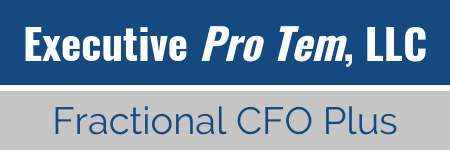The Power of Giving Employees a Voice [Strategic Planning Session: Case Study]

“Research indicates that workers have three prime needs: Interesting work, recognition for doing a good job, and being let in on things that are going on in the company.” – Zig Ziglar
Jack Stull, President of Jcrane, Inc, a leading provider of lifting solutions in Ohio, invited me to facilitate a one-day strategic planning session with his employees.
While much was accomplished during this session, one of the biggest takeaways for Jack was the value of listening to what employees have to say and communication about company goals, plans and vision.
Dan has helped Jcrane for many years from strategic planning to boards to cash flow advice. I rely on Dan’s experience and his ability to see the bigger picture in helping me make better decisions.
As Jcrane continues its growth, we will continue to work with Dan to make us even better. The concepts we've learned from Dan have transformed our company in terms of direction and profitability. I hate to think where we would be without his assistance, knowledge and wisdom. Jack Stull, Jcrane President
Background
As a regional provider to the construction and related industries, Jack started the business with two employees and two cranes. When we met, there were five cranes, assorted trucks, and 12 employees.
Unfortunately, Jack was stuck – too busy to take a long view and too impatient to know that the company had not peaked.
Jcrane is a family business, but it’s an unusual situation where everyone seems to be on the same page. There is a mix of family talent to help with operations and administration, with everyone working just as hard as the other.
Like most small business owners, Jack is a conservative guy who started the business because he didn’t see a way to work for someone else. He knew construction and knew how to work hard, so he gave it a shot.
The Goals
Jack Stull had been managing his company for about six years before we met. The problem was defining and working toward that elusive “Next Level.”
He knew that growth was there but needed the rest of the company to willingly head in that direction — not be pulled or pushed in that direction.
The Approach
Getting to the next level requires commitment. One way to demonstrate that commitment is to shut the business down for a day, with pay, to define the future, and the things keeping the company from achieving its goals.
There were a lot of questions going through the employees' minds, but they knew that shutting down for a day and asking for their opinion couldn’t be all bad.
Often in business, people like to complain that their voice isn’t heard. They have opinions to make the business better, but the owners don’t listen.
Jack took away that complaint and sent an even more important message: You matter, and I can’t do this without you.
Survey after survey show that employees want meaningful work, to be respected and to feel that they are valued. When they have these, they are more likely to give 100%.
There aren’t many things an owner can do to improve a culture more than giving employees a voice in improving today and defining tomorrow.
The Strategic Planning Session
The day started as typical planning sessions often do, with some reluctance to contribute.
But it quickly gained momentum when the conversation turned to the external environment — pressure on prices and working for the right customers.
Jack sat back and listened to a spirited discussion among his employees about discounting for the wrong reasons and having too much work in one industry. The group gelled around the idea that commercial construction was important, but not at any price.
Once the group focused on its strengths and weaknesses, there was a consensus that this small company does best on specific commercial construction jobs, and that is where the quoting energy should be spent. The more difficult jobs are less price-sensitive and often result in Jack’s company as the preferred provider for difficult lifting jobs.
By the end of the day, there was a lot of progress and the priorities centered around three areas:
- a concern over burnout of his current employees,
- an imbalance of work among different industries, and
- inconsistent pricing.
Some might read this and think, “well, that’s not very strategic.”
I don’t know how a company becomes strategic when today’s hurdles are ignored.
Strategic plans fail at implementation because the participants go back to [today’s] work, putting out fires and working around hurdles.
This step is intended to remove some of the hurdles to allow the company to move forward.
The Results
Fast forward about five years and see the results:
- Revenues: 88% increase; 13.5% CAGR
- Net Profit: 78% increase; 12.2% CAGR
- Profit per Unit: 24% increase; 4.5% CAGR
These results were achieved despite a 75% staff turnover.
How did the company achieve those returns and turnover nearly all the staff?
Jack took the step to include everyone in the process and gave them a voice. He had the plan and buy-in from those who stayed to make execution possible.
There were plenty of hiccups along the way (such as people quitting and slower months due to weather), and the plan wasn’t completed exactly on time, but it got done because everyone understood the reason for the changes.
What if your company is too large to stop for a day?
Do your best to get as many people as possible together. Another option is to conduct a strategic planning session on a Saturday, outside of the normal operations schedule.
Even if you can’t get everyone into a room, it is still possible to connect with employees on a smaller, or one-to-one basis. What is important is that you find a way to give them a voice before the strategic plan is “given” to them.
These steps take longer but involve collecting opinions and observations from as many as possible before the leadership team begins its planning sessions. Part of the priorities that come out of that planning session is to communicate in person, not by email so that everyone knows they were heard.
Ready for a consultation? Have a question?
